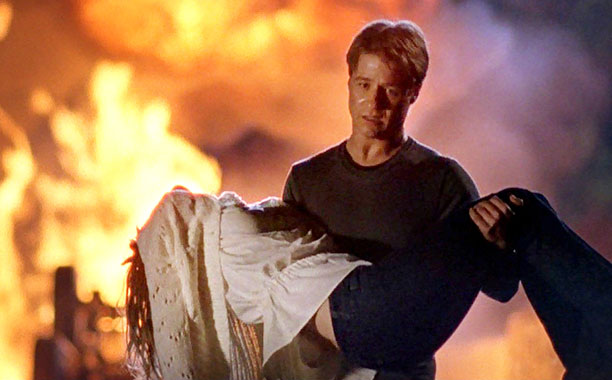Let me paint a picture for you. A group of seven, 14 year-old girls sat around a TV, eyes welling, gripping pillows. We watched Ryan slowly walks away from a burning car with Marissa in his arms whilst an acoustic cover of Hallelujah played in the background.
The OC season finale was an social occasion in my house and not one to be missed might I add. Very importantly, the watching of the show was temporal, dictated by a broadcast schedule. However the rise of online distribution has made TV viewing an increasingly individualised process, allowing individuals to control their own scheduling.
In this blog I would like to explore how groups of individuals create their own form of scheduling in order to preserve the social experience of shared television viewing.
In his writing, John Ellis claims ‘If programmes are the building blocks of television, then the schedule is its architecture, defining the edifice that gives meaning to each programmeblock.’ He implies here that, scheduling very much is a constructed and dictated. However with the rise of digital distribution through platforms such as Netflix, the audience is now responsible for arranging these building blocks in order to create whatever kind of architecture we want.
In an attempt to preserve that warm, inclusive, shared experience of watching a TV show together individuals create their own form of scheduling.
I would like to discuss this using my social experience of watching Netflix series, House of Cards.
House of Cards is a political drama set in present day Washington DC and following Frank Underwood, a US Congressman and stars big names such as Kevin Spacey and Robin Wright.
The entire series was released on one day using online distribution platform Netflix, a global trend that is transforming how we view TV. The shows season release demonstrated a shift away from traditional broadcast scheduling and instead towards individualized scheduling.
When I watched House of Cards, I did it alongside my mum, dad and sister.
In order to do this we had to plan when we would watch it, as a family, ultimately creating our own form of scheduling. We waited for every member of the group, because watching episodes without the whole group would be breaking a new, unwritten rule of social scheduling – one must never watch without the group. It’s very much a leave no one behind mentality.
When the structure of shared TV experience, that is a broadcast schedule, is taken away, we have to create the structure ourselves.
Next, we must ask why we do this? Why do we want to have this shared experience.
Richard Lawson put’s it perfectly when he write about his experience of watching the Netflix series. “I was mostly worried about being left out. That’s the problem with this everything-at-once episode dump. There was no way to keep pace with everyone else.”
I believe one of the best things about TV is that it can be a shared experience. There is discourse around particular shows, discussion about media in the media. It is a cultural medium and a part of our society.
Here is a text I received from my father whilst I was on my way home from uni whilst we were in the middle of our House of Cards obsession.
Quite simply, this message demonstrates that people yearn for the days where TV was a social experience and less individualised. Myself, my friends, my colleagues and my family love to talk about TV so therefore, when this constructed schedule that forces us to share experiences is taken away, we create our own to preserve a cultural practise that we love.
We do this to preserve what I think is one of the best things about TV, it can be shared. So we can have more moments like I did in Year 8 watching Marissa die, with the support of my friends.


